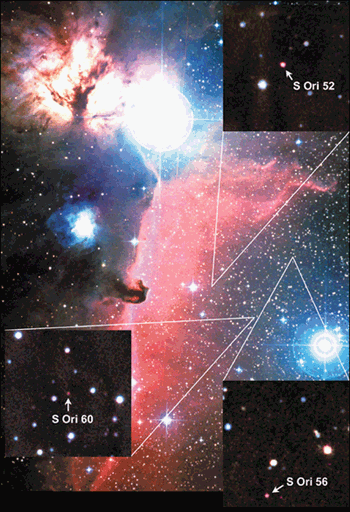Astronomers have detected 18 planet-like objects that appear to be floating freely in space rather than orbiting a star. The objects, which are relatively local at 1148 light years away, appear to be planets but contradict current theories of planetary formation, which are based on the gravitational influence of a parent star. Maria Rosa Zapatero Osorio of the Instituto de Astrofísica de Canarias, Tenerife, and co-workers spotted the objects inside a star cluster in the constellation Orion (M R Zapatero Osorio et al 2000 Science 290 103).

Many planets have been discovered outside our solar system, but they are usually detected by observing the wobble of the parent star induced by the gravitational pull of the orbiting planet. Zapatero Osorio’s team, however, observed the floating planets directly by optical and infrared imaging. The objects are dim and reddish – the characteristics of planets – but brown dwarf stars can also look like this if dust clouds obscure our view. Brown dwarfs are generally defined as bodies between 13 and 75 Jupiter masses, and are massive enough to support nuclear fusion.
To establish their true nature, Zapatero Osorio and colleagues examined the energy spectra of the bodies using the Keck telescopes at the Mauna Kea Observatory in Hawaii. Different molecules emit radiation at characteristic wavelengths, so the spectrum can reveal the object’s composition and mass. Zapatero Osorio’s team found that the spectra fit the profile of young giant planets and that the objects are less massive than brown dwarfs. Like the planets in our solar system, the objects cannot sustain nuclear burning. This confirms that they are cool and explains why they are so faint.
The age of the floating planets also challenges current theories of planet formation. It is thought that planets take tens of millions of years to accumulate under the gravitational influence of the parent star, but the star cluster in which the objects were found is no more than five million years old.
The classification of the objects is partly a problem of terminology, as Zapatero Osorio explains: “If planets only exist around a star, then our candidates are very low mass brown dwarfs. But if planets must be a certain mass, then these objects are planets”. She also notes that this first survey uncovered a relatively large number of the floating planets, suggesting they may be very common.



